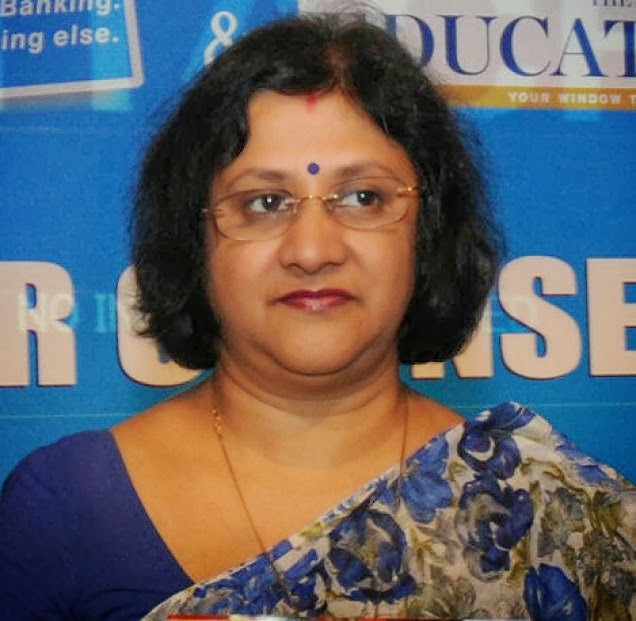Elon Musk (CEO & CTO of SpaceX and CEO & Chief Product Architect of Tesla Motors)
Elon Musk
is an engineer and entrepreneur who builds and operates companies to solve
environmental, social and economic challenges. He co-founded PayPal and
currently drives strategy, development and design at two companies he created,
Space Exploration Technologies (SpaceX) and Tesla Motors, and oversees a third
company, SolarCity, which he co-founded. He led SpaceX’s efforts to be the
first private company to successfully launch and dock a spacecraft with the
international space station
Musk is CEO and Chief Designer of SpaceX, the company he founded in 2002 to build the world’s most advanced rockets and spacecraft with the ultimate goal of extending human life to other planets. He designed Falcon 1, the first privately developed liquid fuel rocket to reach Earth orbit, as well as the Falcon 9 rocket and Dragon spacecraft. SpaceX made history when its Dragon spacecraft became the first commercial vehicle in history to successfully attach to the International Space Station on May 25th, 2012. In 2008, NASA awarded SpaceX a $1.6 billion contract for 12 cargo flights to and from the International Space Station, effectively replacing the Space Shuttle. In 2010, SpaceX became the first commercial company to successfully recover a spacecraft from Earth orbit; a feat previously only achieved by a few nations. In 2011, the company started work preparing the spacecraft to carry astronauts under a NASA award. The first manned flights are expected in 2015.
As CEO and head of product design at Tesla Motors, Musk oversees strategy for the all-electric American car company he co-founded to design, engineer and manufacture affordable electric vehicles for mainstream consumers. He currently guides development of the Model S, the world’s first premium electric sedan, and Model X, an SUV/minivan. Previously, he spearheaded design of the original Tesla Roadster, the first battery electric sports car. Musk developed the business and sales strategy to deliver Tesla vehicles to consumers worldwide and forged partnerships with Daimler and Toyota, through which Tesla Motors sells electric powertrain systems to those companies.
As chairman of SolarCity, Musk provides strategic direction for the company he conceived to help combat global warming and minimize air pollution. SolarCity is a national leader in clean energy services.
PayPal
Musk’s early innovation and success in Internet technology paved the way for him to focus on his lifelong passion for science, engineering and space. In March 1999, he co-founded X.com, which pioneered online point-of-sale functionality for purchases and quickly became one of the Web’s leading financial institutions. In 2000, X.com bought Confinity, and formed PayPal, and successfully made it the leading global payment transfer provider. He served as PayPal’s chairman and chief product officer, and was its largest shareholder until eBay purchased PayPal in 2002 for $1.5 billion. Prior to PayPal, Musk co-founded Zip2, an Internet software company that he sold to Compaq in 1999 for over $300 million.
Musk’s achievements in business and technology have been widely
recognized. Time Magazine included him on its 2010 TIME 100 list of 100 people
who most affected the world. Esquire Magazine named him one its 75 Most
Influential People of the 21st Century, and Forbes Magazine named him one of
America’s 20 Most Powerful CEOs 40 and Under. Based on his work at SpaceX,
Tesla Motors and Solar City, Research and Development Magazine named Musk its
Innovator of the Year and Inc. Magazine named him its Entrepreneur of the Year.
His focus on space exploration and his contributions to the
field are also renowned. The world governing body for aerospace records,
Fédération Aéronautique Internationale, presented Musk with its Gold Space
Medal for designing the first privately developed rocket to reach orbit. The
Kitty Hawk Foundation recognized Musk as a Living Legend in Aviation for
creating the Falcon 9 rocket and Dragon spacecraft, and Aviation Week named him
its 2008 Laureate for his significant global achievements in the space
industry. Musk has received the Heinlein Prize for his contributions to the
commercialization of space; the American Institute of Aeronautics and
Astronautics award for the greatest contribution to the field of space
transportation; and the National Space Society Von Braun Trophy for the most
significant achievement in space.
Musk created and is chairman of the Musk Foundation, which
focuses on aerospace, clean energy, science education and pediatric health. The
Foundation has donated solar power projects to Soma, Japan – a city devastated
by both earthquake and tsunami – and to a hurricane response center in coastal
Alabama operated by victims of Hurricane Katrina and the Gulf Oil Spill. Facilitated
by SolarCity, these projects bring much-needed low-cost, clean power to both
regions as recovery efforts continue.
Musk is a trustee of the X Prize Foundation, which promotes
renewable energy technologies, and sits on the boards of The Space Foundation,
The National Academies Aeronautics and Space Engineering Board and The
Planetary Society. He is also a member of the Stanford University Engineering
Advisory Council.
He holds a physics degree from the University of Pennsylvania
and a business degree from Wharton.
FOR MORE
:-
http://en.wikipedia.org/wiki/Elon_Musk
http://www.forbes.com/profile/elon-musk/
http://www.spacex.com/about/leadership






.jpg)

.jpg)
























.jpg)


